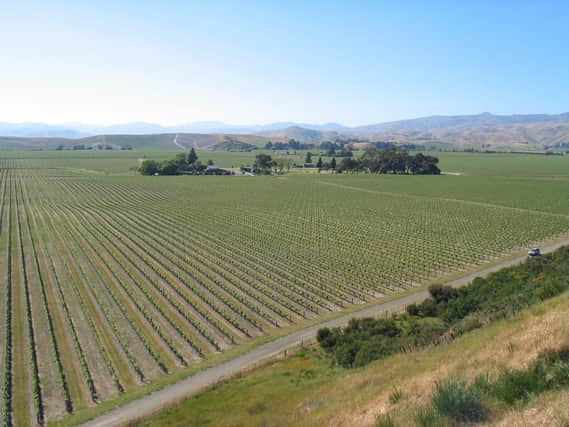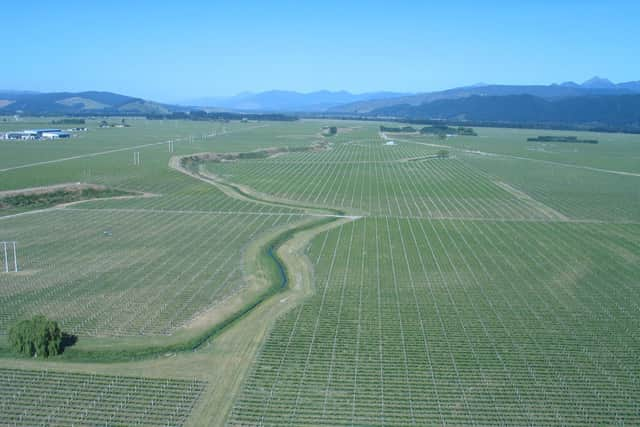Here are some great Sauvignon Blancs to try this summer


I have never really noticed the highs and lows of trends, but I have refreshed my wardrobe from time to time, and at least tried to look tidy. But all that has changed. Working from home, with occasional breaks for gardening and home baking has changed the clothes I need. During lockdown I generally slop around in the same baggy tops and jeans for days on end.
The benefit of having a range of go-to clothing removes the need to make decisions, and I really am quite happy feeling comfortable and unchallenged, and the same might be said of wine choices.
Advertisement
Hide AdAdvertisement
Hide AdThere has been a slight kickback against Sauvignon Blanc in recent years. It mirrors the fall from grace that Chardonnay went through when it was fashionable to declare “I don’t drink Chardonnay,” quickly followed by, “A glass of Chablis? Yes, please, it is delicious.”


Read more:
I have no idea why Sauvignon Blanc has moved to the sneering end of the wine bar list, but perhaps some supermarket versions became too cheap, slightly too sweet and a bit thin in flavour, but it takes a lot more than a curl of the collective drinkers’ lips to damage the reputation of a grape variety.
Sauvignon Blanc has long been a great favourite of drinkers, even when its only known existence was a bottle of Sancerre. Now it comes from so many places it offers a whole spectrum of flavours, all of them vibrant, lively and threaded with a seam of citrus that makes Sauvignon Blanc a fabulous wine to drink as an aperitif or with food.
Its name may come from the shape of its leaves which resemble the wild vine –translates as “sauvage”, and it has passed its savage name on to its progeny, Cabernet Sauvignon, which is the result of a natural cross with the red grape of the Loire, Cabernet Franc.
Advertisement
Hide AdAdvertisement
Hide AdAnd while Sauvignon Blanc has been growing in the Loire region for probably 500 years, its real entrance onto the world stage was in the 1970s when New Zealand, in defiance of a government plan which suggested apples as the national crop, planted vast areas of grapes.
In particular, the vast, flat, cool-climate area of Marlborough, at the top of South Island, based on the old stony bed of the Wairau River, proved the ideal place to cultivate this grape. Land which had been used for cattle grazing suddenly became highly valuable and the wine industry transformed the economics of the whole region. New vineyards have spilled out from Marlborough, over the hills and into the Awatere Valley where an even cooler climate gives slightly different characteristics.
This is the region of big producers which can machine-harvest tons of grapes in a morning and get them into their bright, shiny, stainless steel wineries within a few hours, keeping flavours fresh and vibrant. They also have the marketing strength to get the wines into our stores at very competitive prices. There are some really quite decent New Zealand Sauvignons on the shelves at just £5.99, although you need to spend more to find the real quality.
And where New Zealand leads, other countries have followed. Some stunning Sauvignon Blancs come from the cool Casablanca Valley of Chile and from the coastal region of Leyda.
Advertisement
Hide AdAdvertisement
Hide AdThe influence of the sea is also felt in South Africa which is now making great value Sauvignons. This competition has had an effect in France where the Loire, Bordeaux and even the hilly parts of the Languedoc are now producing super Sauvignons.
Now that we can order, open and enjoy our choice of Sauvignons without the critical eye of companions perhaps turning up their noses at our selection, it is time to taste and find the ones you like best.
Here are my go-to Sauvignon Blanc favourites.
Exquisite Leyda Sauvignon Blanc, Chile, Aldi, £5.99: Stylish Sauvignon with rounded passion fruit and citrus notes and a definite minerally crunch. Team with grilled sea bass.
Brancott Estate Sauvignon Blanc, 2019, New Zealand, Booths, down from £9.50 to £6.33 until June 2: From one of the big producers but don’t let that put you off. This has all the right fresh gooseberry and citrus flavours and it goes down well on a warm sunny day.
Advertisement
Hide AdAdvertisement
Hide AdDourthe Sauvignon Blanc 2018, Bordeaux, France, Waitrose, down from £9.49 to £6.99 until June 2: More grapefruit than gooseberry with ripe pears, passionfruit and a touch of salty minerals on the finish.
Porcupine Ridge Sauvignon Blanc 2019, Western Cape, South Africa, Sainsbury’s, £7.50: A crisp, zesty wine with distinct notes of fresh pineapple and crumpled blackcurrant leaves.
Marlborough Sauvignon Blanc 2019, New Zealand, Tesco, £8: A great balance of quality and value, this is full of bright, juicy, gooseberry flavours with a clean freshness on the finish.
Esk Valley Sauvignon Blanc 2019, Marlborough, York Wines, £10.65: Fresh and zingy with notes of lychee and asparagus. Great flavours for money.
Advertisement
Hide AdAdvertisement
Hide AdDoctor’s Sauvignon Blanc 2019, Marlborough, New Zealand, Majestic, £10.99: Lower alcohol wine (9.5% abv) with all the taste of a full-strength one. This is naturally lower in alcohol, so you can sip it longer.
Dog Point Sauvignon Blanc 2018, Marlborough, New Zealand, Hic! Wine Merchant, £15.75: Vibrant, citrus-filled and zesty with honeydew melon and ripe pears. Perfect with seafood.
Greywacke Sauvignon Blanc 2018, New Zealand, Concept Fine Wine (Harrogate), £15.99: From Kevin Judd, the winemaker who made Cloudy Bay famous, this is a complex, elegant, citrus-driven wine, with honeysuckle, nectarine fruit and mandarin notes. Also available from Roberts & Speight and Field & Fawcett. Step up to Greywacke Wild Sauvignon (Field & Fawcett, £26.50, for the 2015 vintage), fermented with wild yeast in well-used French oak barriques. This is Sauvignon like you have never tasted it before. Complex notes of herb-dusted mango, pineapple and peach, shot through with lime freshness.
Sancerre La Chatellenie 2018, Joseph Mellot, France, Bon Coeur, £22: Full of crisp, citrus and herbaceous notes with notes of pear and mango and ending with crunchy, pebble-like minerally notes. With a long, balanced, saline finish, this is the upmarket partner to grilled fish, scallops or sushi.
Advertisement
Hide AdAdvertisement
Hide AdEditor’s note: first and foremost - and rarely have I written down these words with more sincerity - I hope this finds you well.
Almost certainly you are here because you value the quality and the integrity of the journalism produced by The Yorkshire Post’s journalists - almost all of which live alongside you in Yorkshire, spending the wages they earn with Yorkshire businesses - who last year took this title to the industry watchdog’s Most Trusted Newspaper in Britain accolade.
And that is why I must make an urgent request of you: as advertising revenue declines, your support becomes evermore crucial to the maintenance of the journalistic standards expected of The Yorkshire Post. If you can, safely, please buy a paper or take up a subscription. We want to continue to make you proud of Yorkshire’s National Newspaper but we are going to need your help.
Postal subscription copies can be ordered by calling 0330 4030066 or by emailing [email protected]. Vouchers, to be exchanged at retail sales outlets - our newsagents need you, too - can be subscribed to by contacting subscriptions on 0330 1235950 or by visiting www.localsubsplus.co.uk where you should select The Yorkshire Post from the list of titles available.
Advertisement
Hide AdAdvertisement
Hide AdIf you want to help right now, download our tablet app from the App / Play Stores. Every contribution you make helps to provide this county with the best regional journalism in the country.
Sincerely. Thank you.
James Mitchinson
Editor